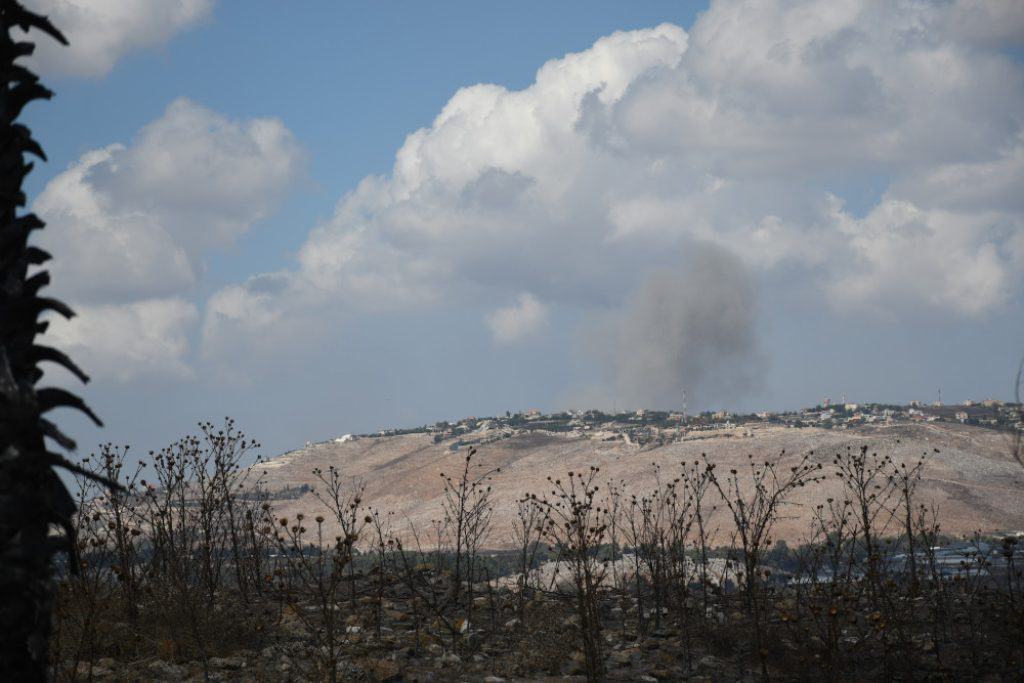
This article was originally published on Long War Journal. You can read the original article HERE

On September 23, the Israel Defense Forces (IDF) carried out its largest and most wide-ranging strikes against Hezbollah in 11 months. The IDF said it struck more than 1,300 targets using 1,400 munitions. “Over the past day, we have been demolishing what Hezbollah has been building over the past 20 years. Nasrallah remains alone at the top—entire Radwan units were taken out of battle, and tens of thousands of rockets have been destroyed,” Israeli Defense Minister Yoav Gallant said in the afternoon.
The strikes are part of an increasingly intense phase of operations that began with Hezbollah suffering losses due to thousands of exploding pagers on September 17. In the following days, more Hezbollah devices exploded, and the IDF carried out a strike in Beirut that eliminated 16 Hezbollah commanders. This set the stage for wide-ranging airstrikes against Hezbollah rocket launchers, followed by additional targets across southern Lebanon and in the Bekaa Valley.
The IDF has increased the intensity of its strikes in stages. Hezbollah has sought to respond, launching rockets deeper into Israel on September 22. The Iranian-backed group followed up this attack by launching waves of rockets across northern Israel, with some reaching central Israel on September 23.
The IDF has trained for war against Hezbollah for many years, as the Iranian-backed group was seen as the major threat to Israel’s security before Hamas’s attack on October 7. The IDF had estimated that Hezbollah would be able to launch between hundreds and thousands of rockets per day at Israel in a conflict. However, throughout the first days of this new phase of the conflict with Hezbollah, the group has usually resorted to barrages of dozens of projectiles and hasn’t been able to launch more than several hundred per day.
Gallant conducted a situational assessment at the command center of the IDF’s Operations Directorate with Major General Oded Basiuk, commander of the Directorate, the Defense Minister’s office said on the afternoon of September 23. Gallant said Israel’s shift to the north has been in the process for weeks, and the September 20 strike in Beirut has left Hezbollah leader Hassan Nasrallah isolated, with most of his key commanders removed below him. “Entire units were taken out of battle as a result of the activities conducted at the beginning of the week in which numerous terrorists were injured.”
Gallant estimates that tens of thousands of Hezbollah’s rockets have been destroyed, including its highly valued precision munitions. Out of a stockpile of more than 150,000 rockets and other projectiles, this appears to be a serious loss for the group. IDF Chief of Staff Lieutenant General Herzi Halevi shared similar sentiments in a statement on the evening of September 23. “We are striking targets and preparing for the next phases, which I will elaborate on shortly. Ultimately, everything is focused on creating the conditions to return the residents of the north to their homes,” he said. Around 60,000 Israelis have been evacuated since October 2023, when Hezbollah’s attacks began.
In northern Israel, the waves of IDF strikes could be seen from near the border. Smoke rose along a line of Lebanese villages where Hezbollah is present, such as Maroun al-Ras. Many of these areas were scenes of fighting in 2006, when the IDF also began the war with the use of air power, only later launching a ground assault. Asked about the possibility of ground operations, the IDF did not elaborate on the future phases of the conflict.
Hezbollah launched barrages of rockets targeting areas east of the Sea of Galilee, Haifa, and neighborhoods near the northern Israeli city. Israel canceled school for roughly 500,000 students on September 23. As the Hezbollah barrages reach closer to central Israel, new restrictions will likely be put in place across the country. In the Golan, the IDF briefly closed some roads due to rockets and fires caused by falling projectiles. Fires caused by Hezbollah rockets also raged near the Israeli community of Givat Avni.
Several Israelis were wounded by the attacks on September 23. The IDF put out several statements warning Lebanese to leave areas where Hezbollah is alleged to have stored weapons in civilian homes. The IDF also produced video and photographic material illustrating how Hezbollah has festooned villages with rockets and weapons stored in homes.
This article was originally published by Long War Journal. We only curate news from sources that align with the core values of our intended conservative audience. If you like the news you read here we encourage you to utilize the original sources for even more great news and opinions you can trust!










Comments